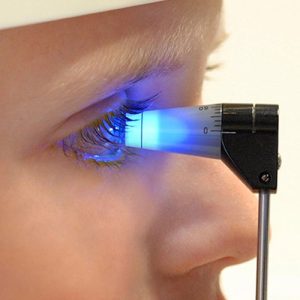Glaucoma research, which investigates the causes of its occurrence and possible treatments, is taking us a giant step closer to increasingly 'patient-friendly' therapies and, in the long run, to a decisive cure for this serious neurodegenerative eye disease.
According to data in the National Library of Medicine, glaucoma currently affects about 70 million people worldwide, of whom about 10% unfortunately go on to achieve bilateral blindness. To reduce this heavy burden clinicians and researchers are constantly working on the development of increasingly sensitive diagnostic imaging techniques and more targeted and effective treatments.
On this issue, it is of utmost importance to only give credit to reliable and qualified sources of information: in fact, while it is correct to say that today we have increasingly effective treatments, the decisive cure for glaucoma is still far off, despite the scoop news often published online.
It should also be emphasised that glaucoma research benefits greatly from international cooperation between scientists, healthcare professionals and patient advocacy groups. For example, international associations, such as the World Glaucoma Association (WGA) and the International Glaucoma Association (IGA), promote research, education and knowledge of glaucomatous neuropathy on a global scale.
Let us therefore try to take stock of the state of the art of research:
- Genetic research has made fundamental contributions to the identification of hereditary factors underlying glaucomatous disease. Scientists have identified several genes associated with an increased risk of developing certain types of glaucoma. For example, mutations in the MYOC and OPTN genes were found to be correlated with the onset of juvenile glaucoma or adult open-angle glaucoma. The GWAS study (Genome Wide Association Studies) identified a total of 44 new genes associated with the onset of glaucoma and confirmed 83 previously identified loci. Ongoing research then aims to identify further genetic markers, which may enable an early diagnosis of this serious optic neuropathy and consequently the development of customised treatment. One such example comes from the study Optimisation of AAV-NDI1 Significantly Enhances Its Therapeutic Value for Correcting Retinal Mitochondrial Dysfunction of Trinity College Dublin, where researchers developed a new gene therapy targeting the enzyme MMP-3 (Matrix Metalloproteinase-3),
 Diagnostic imaging techniques increasingly sensitive have been developed and, in particular, optical coherence tomography, OCT can provide high-resolution, cross-sectional retinal images through a non-invasive approach, while visual field testing allows peripheral vision to be measured and changes in it to be monitored over time.
Diagnostic imaging techniques increasingly sensitive have been developed and, in particular, optical coherence tomography, OCT can provide high-resolution, cross-sectional retinal images through a non-invasive approach, while visual field testing allows peripheral vision to be measured and changes in it to be monitored over time.- Innovative treatments:
- Drugs: researchers are focusing on innovative delivery systems, such as extended-release implants to promote therapeutic adherence and pharmacological efficacy. For example, iDose® TR is an intracameral implant that releases travoprost continuously for three years.
- Minimally invasive surgery (MIGS), Thanks to new techniques and surgical devices, such as Hydrus Microstent and XEN® Gel Stent, it offers a less invasive alternative to traditional techniques.
Regarding the goal, unfortunately still not too close, of a decisive therapy for glaucoma, among the most promising strands of research are
- Stem cell therapyapplied to the repair of ganglion cell and optic nerve damage caused by glaucomatous neuropathy.
- The increasingly advanced applications of theArtificial Intelligence (AI) which could allow a diagnosis to be made long before the onset of the disease or, in the case of an ongoing disease, lead to the identification of a highly customised treatment.
On the subject of glaucoma read also:
- Systemic Diseases and the Risk of Glaucoma? - Italian Ophthalmologist
- Diet and risk of open-angle glaucoma - Oculista Italiano
- Glaucoma and inflammation - Oculist Italiano
- Glaucoma: How important are genetics? - Italian Ophthalmologist
- Glaucoma and neuroprotective properties of natural substances - Oculista Italiano
- Uffelmann, E., Huang, Q.Q., Munung, N.S. et al. Genome-wide association studies. Nat Rev Methods Primers 1, 59 (2021). https://doi.org/10.1038/s43586-021-00056-9
- Chadderton, N.; Palfi, A.; Maloney, D.M.; et al. Optimisation of AAV-NDI1 Significantly Enhances Its Therapeutic Value for Correcting Retinal Mitochondrial Dysfunction. Pharmaceutics2023, 15, 322. https://doi.org/10.3390/pharmaceutics15020322
